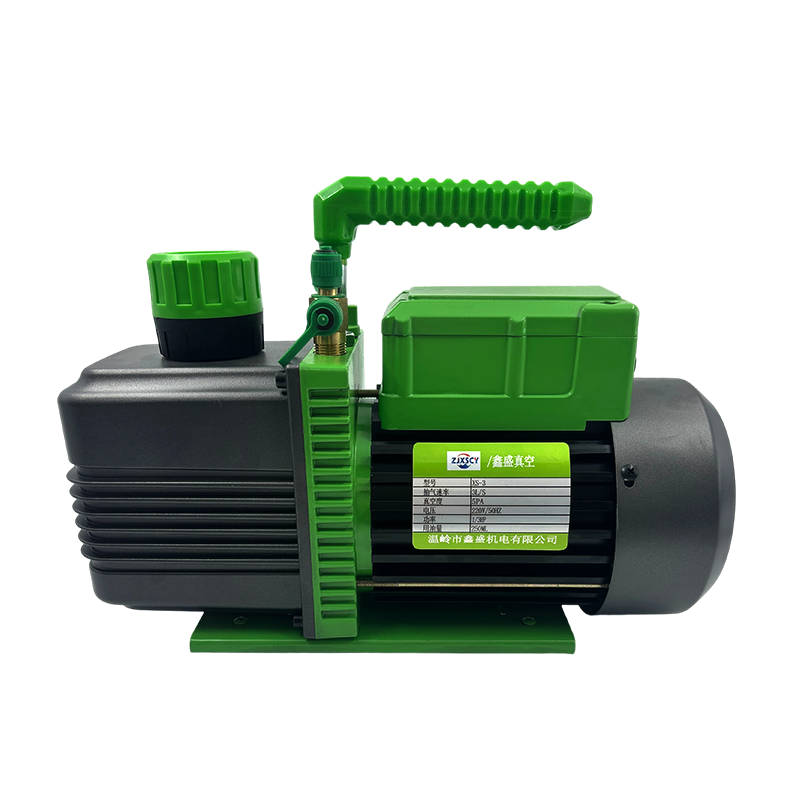Oct 24, 2025
Rotary vane vacuum pumps are widely used in laboratories, industrial processes, and medical applications due to their reliability and efficiency. These pumps operate by using rotating vanes to move air or gas, creating a vacuum in a controlled manner. Choosing the right type of rotary vane vacuum pump and understanding the maintenance requirements are important for ensuring long-term performance and smooth operation.

1. Single-Stage Rotary Vane Vacuum Pumps
Design: Features one set of vanes and a single compression chamber.
Performance: Suitable for low to medium vacuum applications.
Cost: Typically more affordable and easier to maintain.
Expanding on these points, single-stage rotary vane vacuum pumps are ideal for applications that do not require extremely low pressures. The simple design includes one set of vanes rotating inside the chamber, which moves air efficiently to create a vacuum. These pumps are often chosen for laboratory tasks, packaging processes, or small-scale industrial applications where moderate vacuum levels are sufficient. Because of their straightforward construction, single-stage pumps are easier to service, and replacement parts are usually more accessible, making them a practical choice for operators seeking reliable performance without high costs.
2. Two-Stage Rotary Vane Vacuum Pumps
Design: Contains two compression chambers in series for higher vacuum performance.
Performance: Capable of achieving deeper vacuum levels than single-stage pumps.
Applications: Used in processes that require low pressures, such as freeze-drying or vacuum coating.
Expanding on these points, two-stage rotary vane vacuum pumps provide enhanced performance for more demanding applications. The stage reduces the pressure, and the second stage further compresses the remaining air to achieve a deeper vacuum. This design allows these pumps to handle processes that require precise control and lower pressures. While two-stage pumps may have a slightly higher initial cost, their efficiency and ability to maintain deeper vacuums make them essential for certain industrial and laboratory operations. Regular maintenance ensures that the vanes and other components continue to function effectively over time.
3. Maintenance and Part Replacement
Vane wear: Vanes may need replacement depending on operating hours and conditions.
Oil changes: Regular replacement of pump oil ensures ideal performance.
Seals and bearings: Periodic inspection and replacement maintain efficiency and prevent leaks.
Expanding on these points, proper maintenance is crucial for the longevity of rotary vane vacuum pumps. The vanes are subject to wear over time, especially in high-use or high-temperature environments, so regular inspection is recommended. Oil changes are necessary to prevent contamination and maintain smooth operation. Additionally, seals and bearings should be checked and replaced as needed to avoid reduced efficiency or operational issues. Following manufacturer guidelines helps determine the appropriate schedule for part replacement, ensuring that the pump remains reliable and performs consistently over its lifetime.
4. Choosing Rotary Vane Vacuum Pump Manufacturers
Reputation: Selecting experienced manufacturers ensures quality and support.
Spare parts availability: Reliable manufacturers provide easy access to replacement components.
Technical support: Access to guidance helps maintain ideal pump operation.
Expanding on these points, choosing the right rotary vane vacuum pump manufacturers is important for both performance and service. Established manufacturers often provide durable pumps built to withstand continuous use. They also offer spare parts and technical support, simplifying maintenance and part replacement. Working with reputable manufacturers ensures that the pumps meet industry standards and reduces the risk of operational issues, allowing operators to maintain smooth workflows and prolong the life of the equipment.